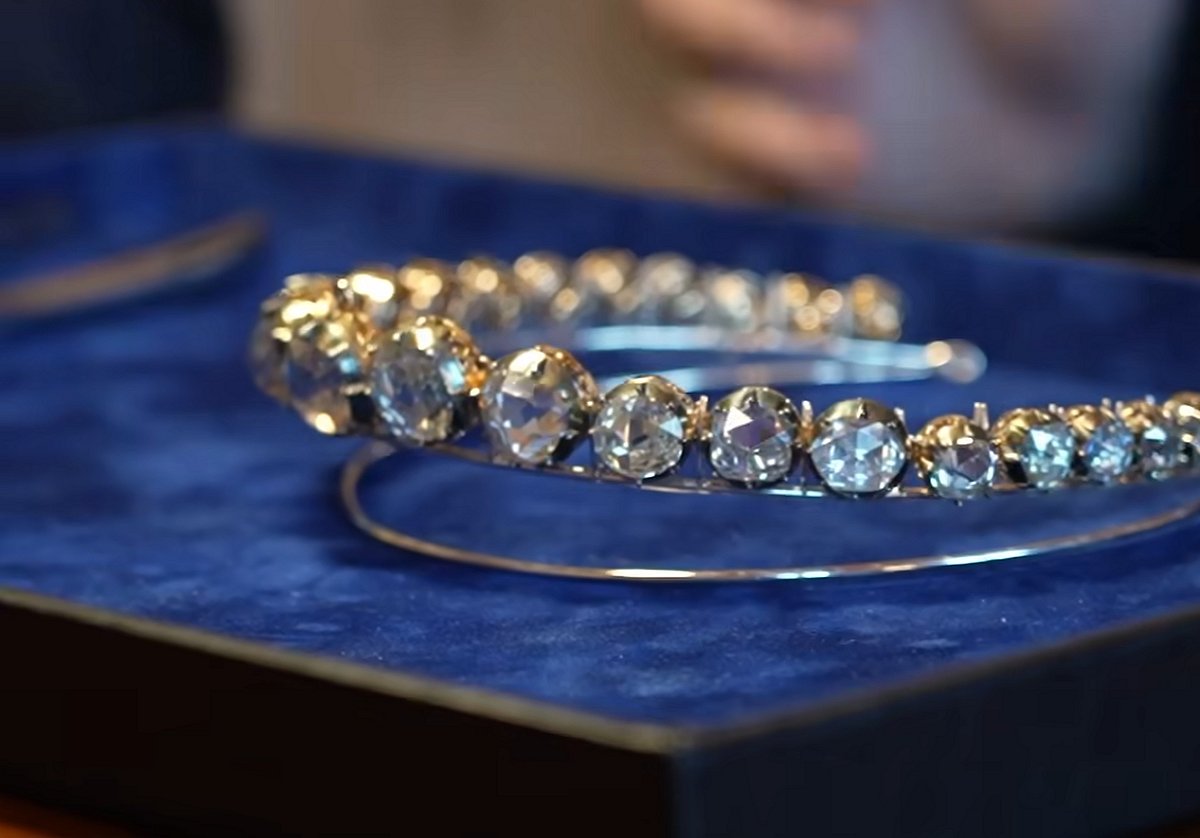
We were treated to some incredible royal jewelry news out of Denmark yesterday: a new tiara setting has been created for diamonds from the crown jewel collection! Let’s take a closer look today at the new Danish Rose Diamond Bandeau.
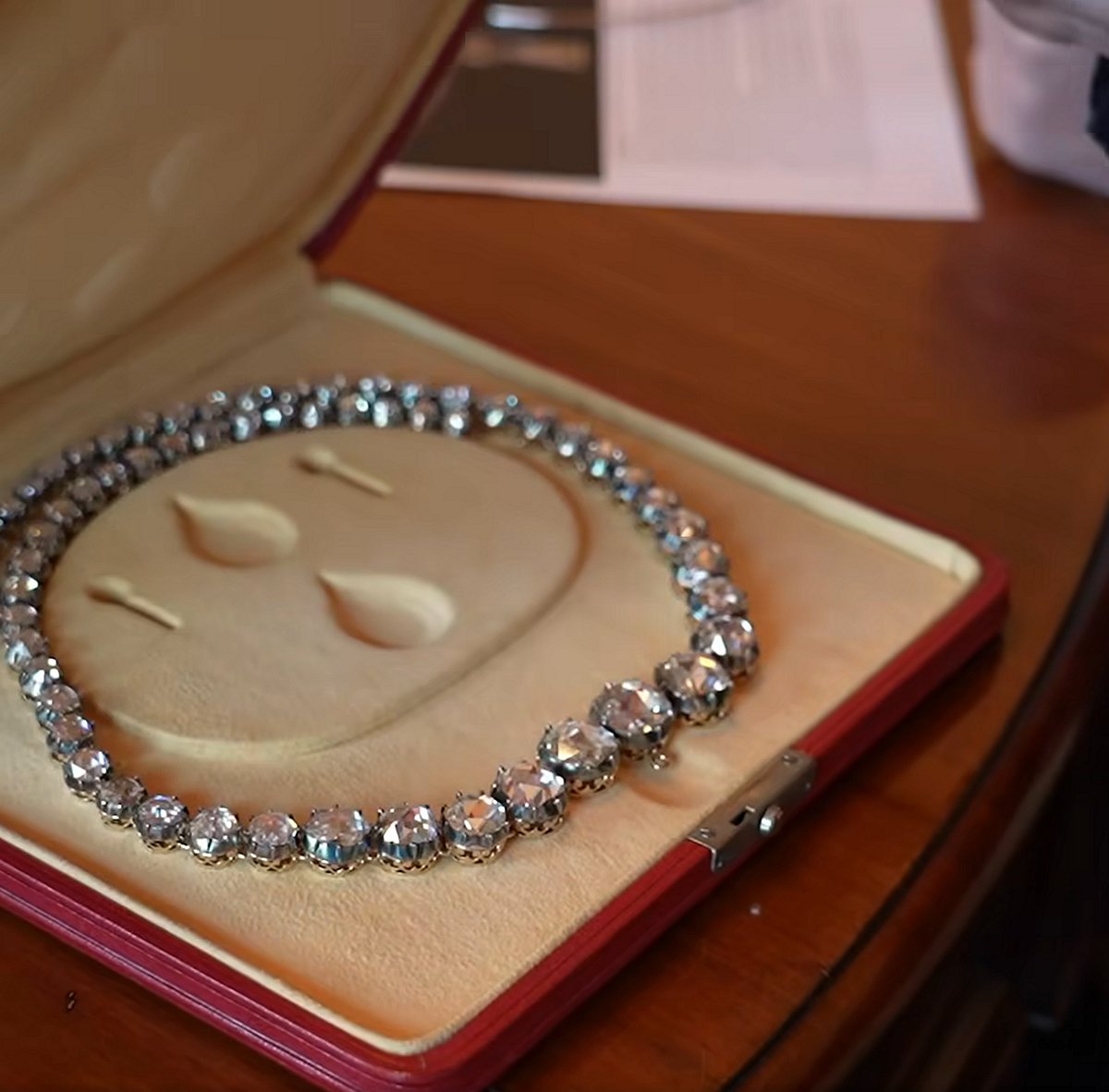
The Danish crown jewelry collection consists of crowns, regalia, and four special suites of jewelry. These parures, also called “garnitures,” are some of the only crown jewels in the world that are both displayed in a museum and still worn regularly by the highest-ranking woman in the realm. The four suites—the diamond brilliant parure, the emerald parure, the ruby and pearl parure, and the rose-cut diamond parure—were made using heirloom gemstones in 1840, during the reign of King Christian VIII, under the supervision of his wife, Queen Caroline Amalie. Earlier this year, I wrote an extensive article on her life and the creation of the parures, which you can read at Hidden Gems.
The last of the suites mentioned above, the rose-cut diamond parure, consists of an elaborate diamond tassel ornament and a long diamond chain, which was originally used as a girdle or belt, to be worn around the corseted waist of a nineteenth-century royal lady. The central portion of the chain is shown above in a red leather jewelry case.

The tassel and chain were made, as the name suggests, using rose-cut diamonds from the collection of a Danish royal lady who lived during the eighteenth century. Princess Charlotte Amalie of Denmark (1706-1782) lived through the reigns of her father, King Frederik IV; her brother, King Christian VI; her nephew, King Frederik V; and her great-nephew, King Christian VII. She never married herself, but she maintained vital, friendly relationships with almost every member of her family, at a time when there was significant animosity and infighting among them. Her jewels remained with the family after her death. In the portrait above, which is now part of Britain’s Royal Collection, she wears a diamond belt similar to the one that is now set with her own rose-cut diamonds.
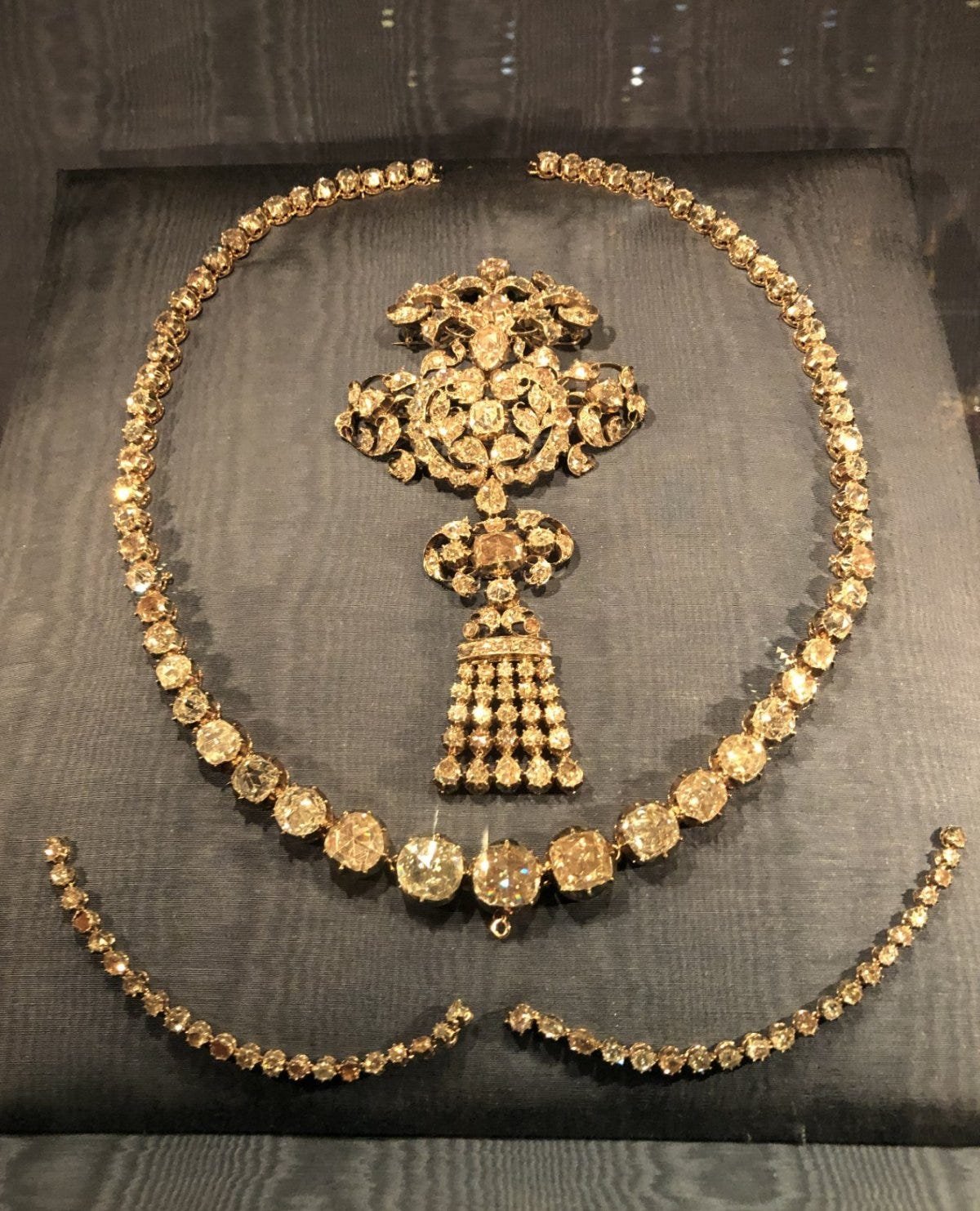
Here’s a look at the full rose-cut suite in its present form. The jewelry suites were renovated in 1840 by the German goldsmith Carl Martin Weisshaupt ahead of King Christian VII and Queen Caroline Amalie’s coronation. Per the Danish royal court, the diamonds were last worn in their large belt/girdle form by Queen Lovisa of Denmark, the wife of King Frederik VIII. Queen Mary and the experts at the Royal Collection have decided together to breathe new life into the set, designing a new frame that will allow the largest stones from the diamond belt to be worn as a tiara.

Rose-cut diamonds, which feature triangular facets across their top surface and a flat-cut bottom surface, were popular throughout the eighteenth and nineteenth centuries, until diamond cutters realized that angling the bottom surface of the gemstone produced a more brilliant sparkle. Rose cut diamonds tend to glow rather than glitter, and the closed settings of the Danish rose-cut diamonds also dims their light a bit.
Regardless, the stones are impressive, and it makes sense that Queen Mary and the jewelry experts of the Danish Royal Collection would decide to make them more versatile by creating a bandeau-style tiara setting for the gems. Above, you’ll see some of the sketches and renderings produced during the design process for the new tiara.

And here’s a sketch of Queen Mary wearing the new tiara. A statement from the royal court about the design process noted, “With the creation of the new frame, The Queen and the Royal Collection are resuming the old tradition of adapting the crown jewels to the demands and needs of the times. This in many ways marks a new path for the Danish crown jewels, uniting the different traditions that have surrounded these four iconic jewelry sets–a path between revitalization and continuity.”
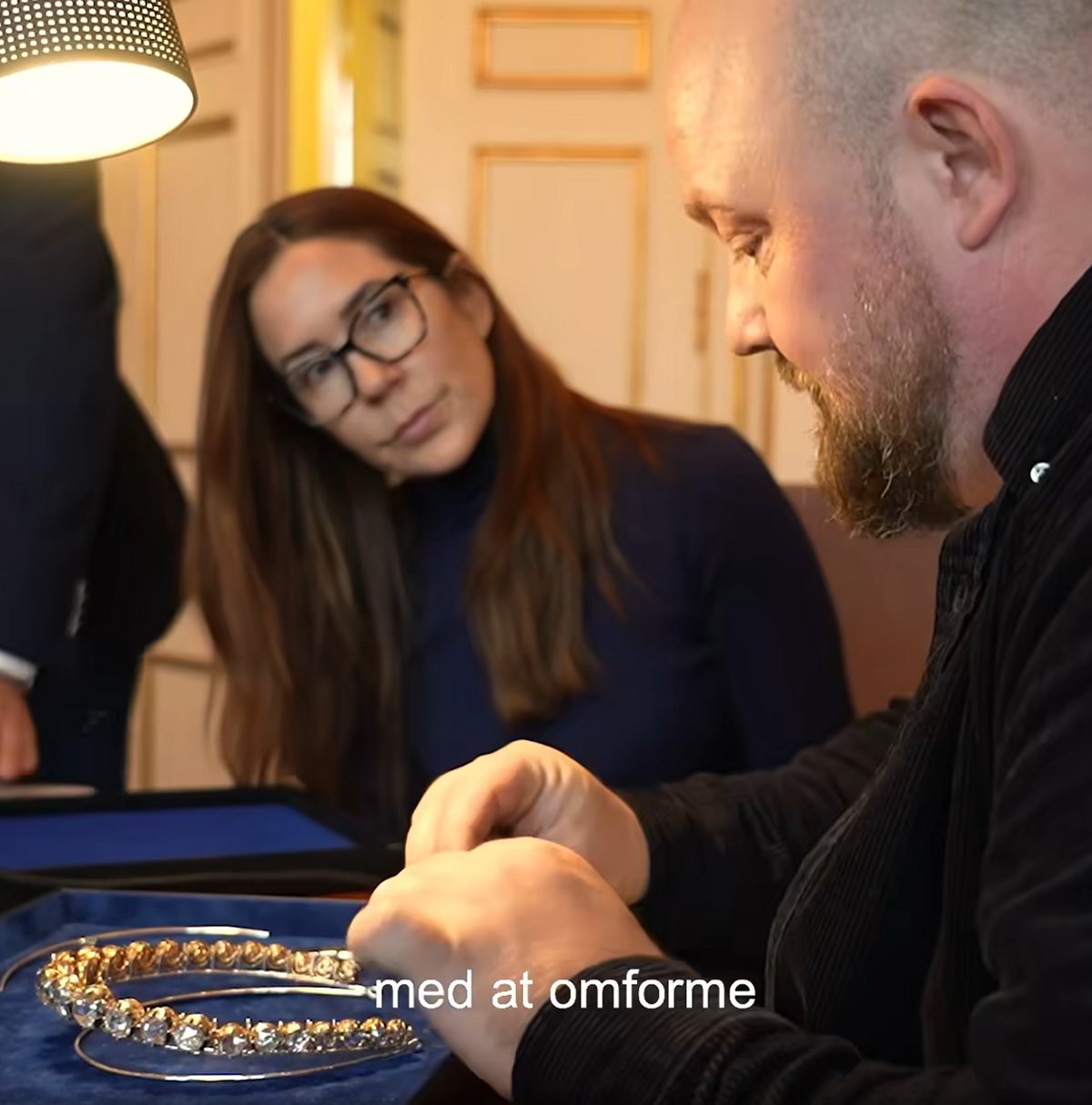
A video released on social media by the royal court shows Queen Mary consulting with Thomas Thulstrup, museum director of Denmark’s Royal Collection, and the goldsmith Matias Hasbo Dinesen, who created the new frame for the tiara.
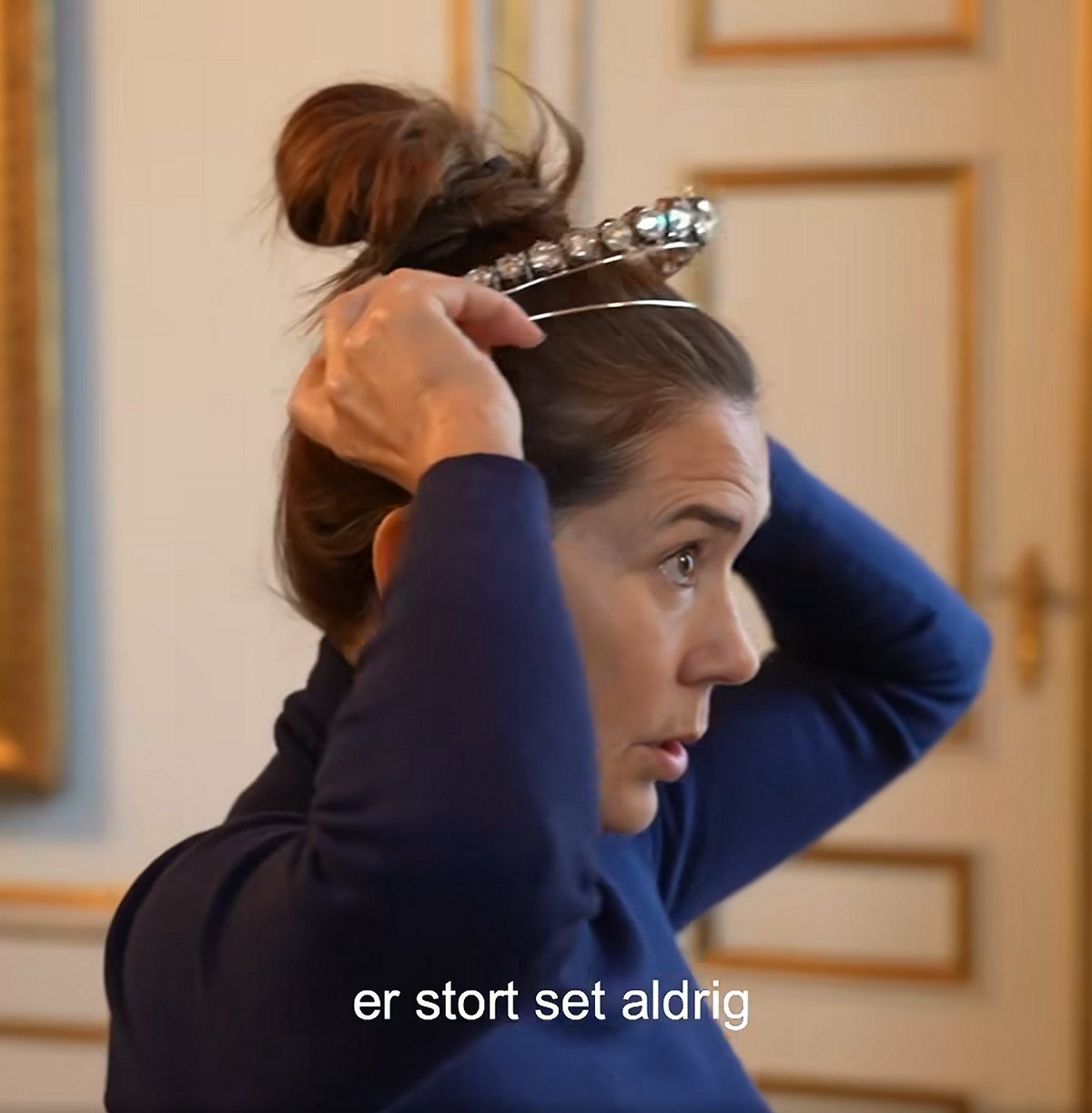
We also get to see Mary trying on the new tiara, showing it from several angles. The frame has been designed so that it lifts the diamonds off of Mary’s head, giving the piece height and allowing the frame to nestle into her hair. The creation of the new tiara offers Mary one more all-diamond tiara option in her growing jewelry arsenal—something particularly meaningful when you remember that there are a pair of princesses, Isabella and Josephine, who will soon be old enough to receive tiaras of their own. (Mary’s diamond wedding tiara and her Edwardian tiara, both her personal jewels, are surely eventually going to be worn by her daughters.)

Here’s another view that showcases the length of the bandeau-style tiara. The diamonds cascade backward, past Mary’s ears, when she wears the piece in tiara form. The statement released by the royal court describes the style of the tiara as “a headband for mounting in the hair consisting of a single row of rose-cut diamonds,” adding, “This simple shape continues the expression of the belt, where the diamonds are also mounted in a row.”
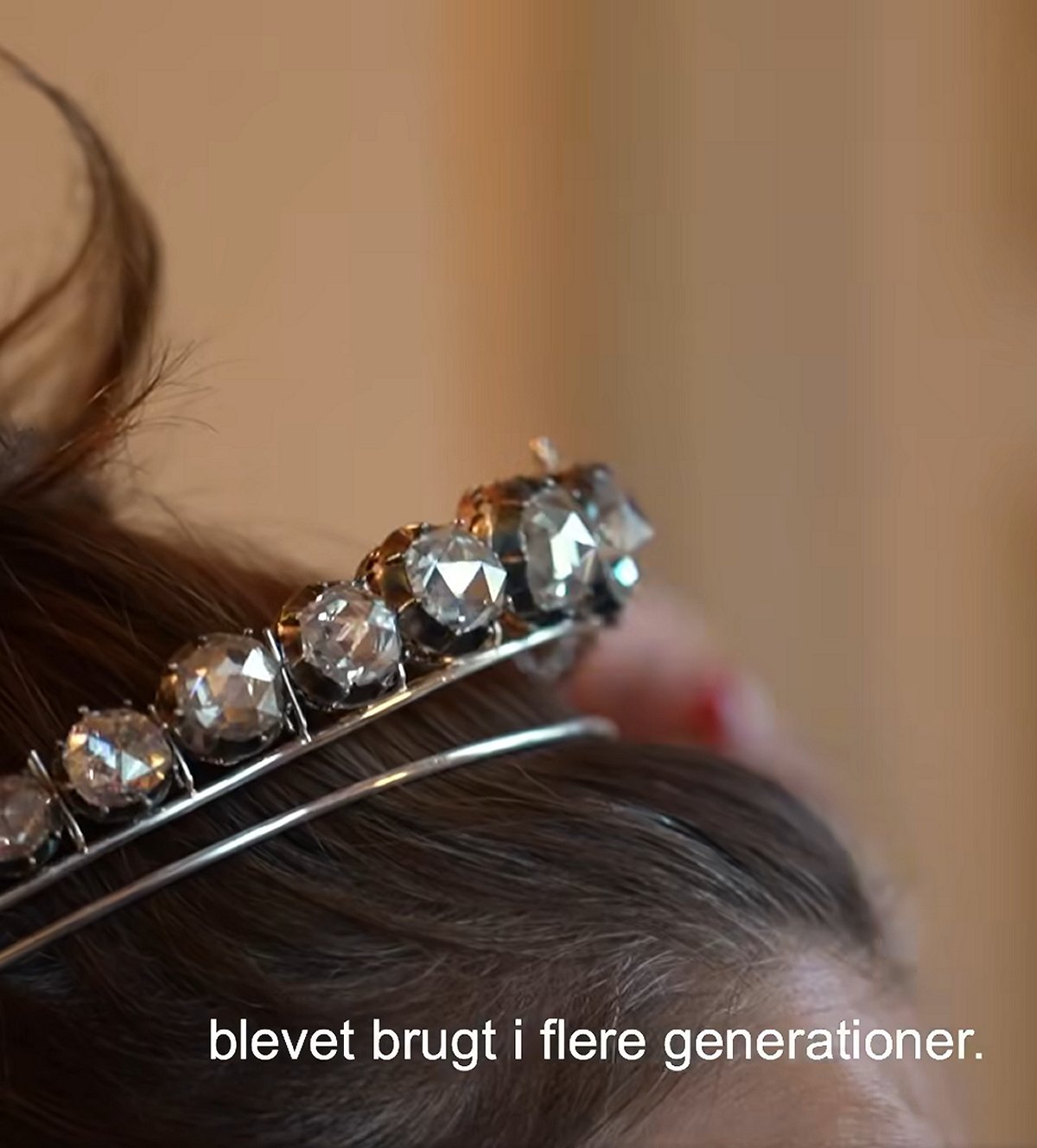
And this angle shows off the hallmarks of a rose-cut diamond: the triangular facets on the surface of the stone. Most modern brilliants have a flat central table facet, while rose-cut diamonds have evenly arranged triangular facets. The royal court’s statement also addresses the unique nature of the diamonds and their settings: “Since the historical settings from the 1840s are preserved in the new tiara, the back of the diamonds will remain closed, whereby the diamonds will not, as is normal in tiaras, be illuminated. As a result, they will appear less brilliant than if the case had been open settings.” The video shows how each of the individual diamonds are screwed onto the new frame.

I know I’m not the only one who, when the images of the new tiara were shared, immediately thought of another royal tiara: the Dutch Diamond Bandeau from the royal jewelry vaults in the Netherlands. The new Danish tiara echoes the design and setting of the Dutch bandeau, which was also created by repurposing antique diamonds. In the case of the Dutch tiara, the gems were originally set in a necklace, which had given by the Dutch people to Queen Emma as a wedding present in 1879.
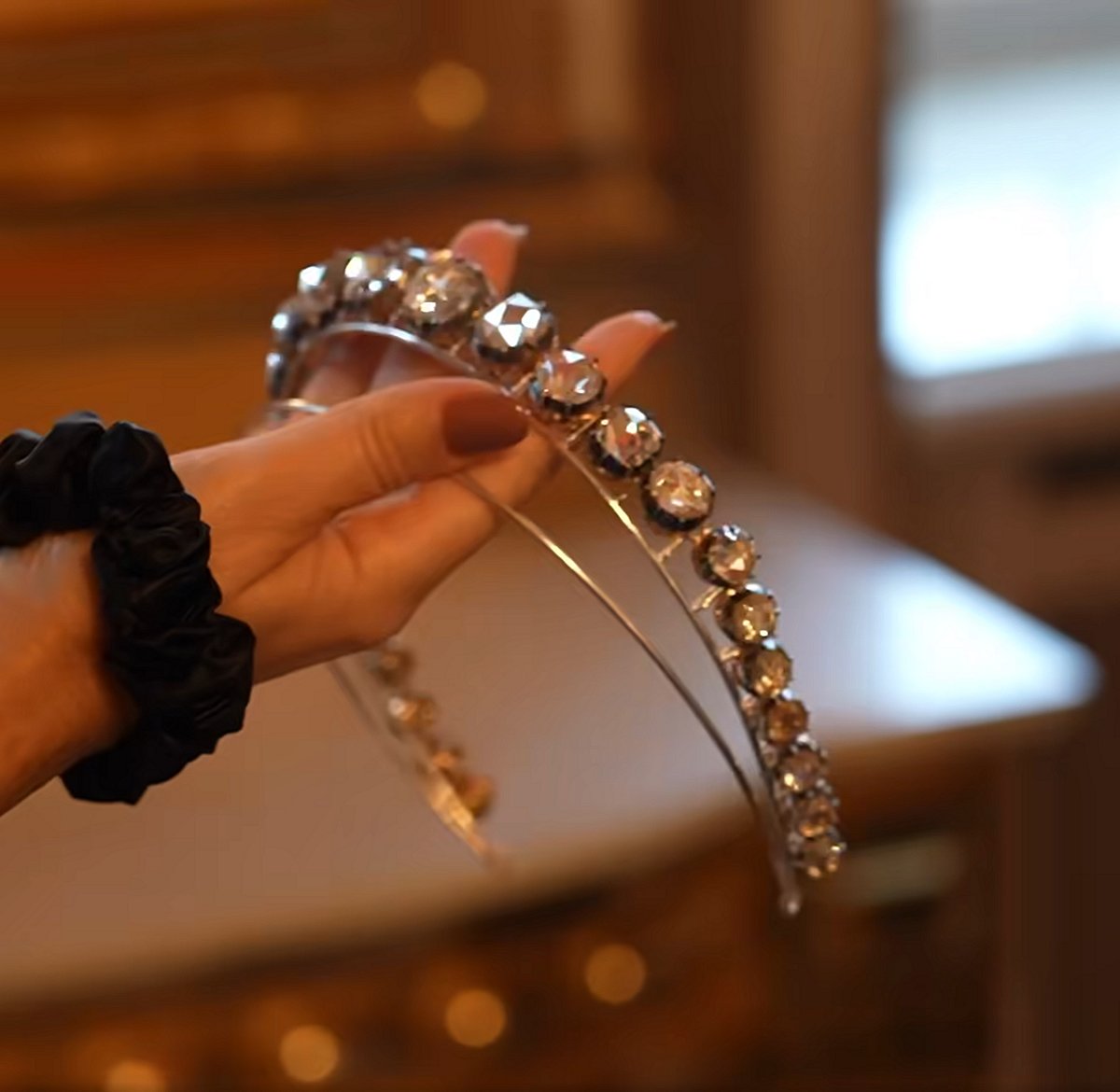
Here’s one more look at the new Danish Rose Diamond Bandeau, which shares such interesting similarities with its Dutch royal cousin. The timing of the announcement of the creation of the new tiara is interesting to me, as the King and Queen of Denmark will be hosting a state visit for the President of Egypt this Friday and Saturday. Could we see Mary wearing the new bandeau during the banquet on Friday evening? Because the crown jewels in Denmark cannot be taken out of the country, the new bandeau can only be worn for gala events in Denmark. This weekend’s banquet would certainly fit the bill.
Leave a Reply
You must be logged in to post a comment.